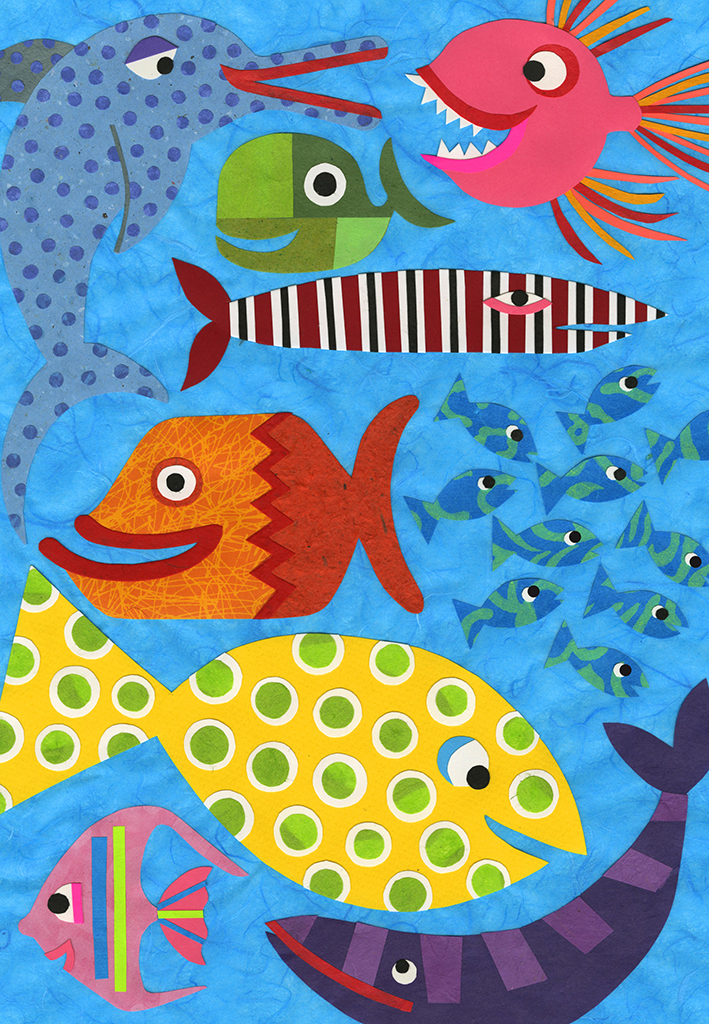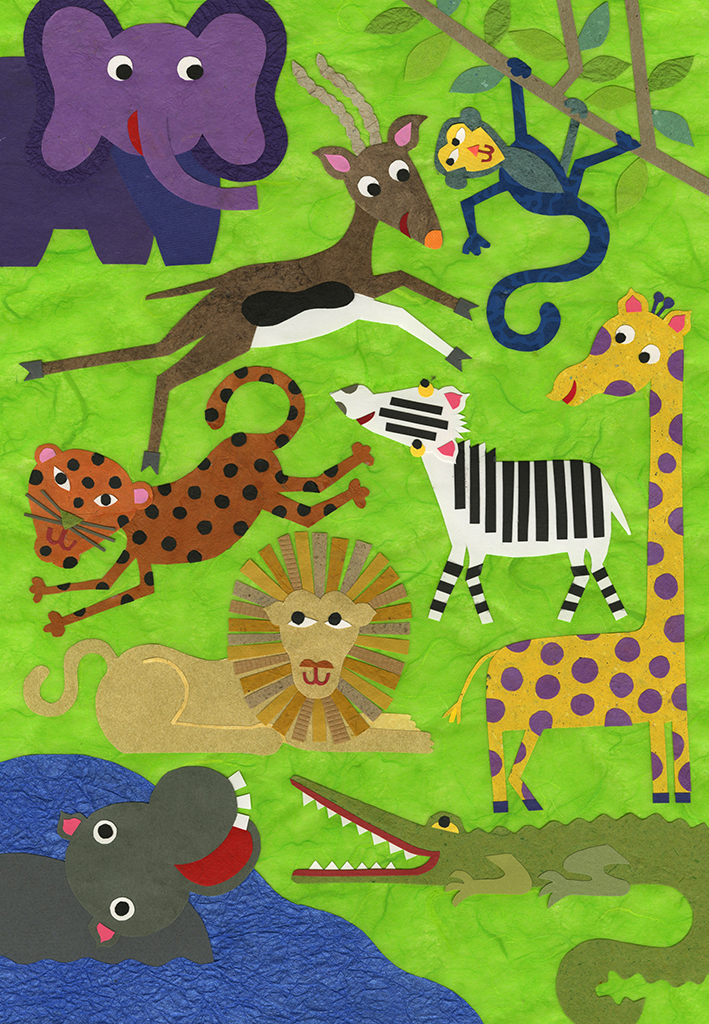Artist Bio:
My career as an artist focuses on cut-paper art. Simple imagery can come alive when it is created using paper. The unlimited texture and color combinations add a dimension to my work that I haven’t been able to recreate in any other medium. I use this medium to explore and engage issues that are important to me. I have found that the most effective way to use my art to engage the public is through the vehicle of children’s books. Using my art to tell stories through pictures has allowed me create and publish a number of successful children’s books that promote these issues by exposing my young readers and their parents to the world of economic justice and the promotion of peace. My first published children’s book, Praying With Our Feet, has an anti-war theme. It shows how, by participating in a peace walk, a child can make a significant and positive contribution to the world. My book, Sleep in Peace, reminds children all over the world that they are loved. Think Fair Trade First, the first book for children with age-appropriate information regarding fair trade, explains what fair trade is, why it is important and how kids can be a significant part of this movement. My most recent book, An Amish Alphabet, helps explain why the Amish community makes the lifestyle decisions that they do.
The diverse imagery of my books supports the content which empowers all children to understand that they can make a difference. Historically children’s books have not done a good job depicting diversity. This problem is slowly beginning to change. I am part of this change.
I am a strong proponent of sketching as a tool for generating ideas. Every successful project for me begins with this simple exercise to focus my thoughts, explore possibilities and refine a variety of directions. My process is the cumulative result of my training and experience as both a designer and fine artist. These dual influences work together to inform my creations and make them stronger. I sketch not only at the beginning of projects, but also anytime I need to solve a problem throughout my process.
Design does not exist in a vacuum. Because design is a field of communication, it is critical for designers to be aware of and engaged in the world around them. My work reflects widely varied influences. Because I was trained by professors who studied with Paul Rand and Bradbury Thompson, the guiding principals of Swiss design influence my work. The world of fine art is another source of inspiration for me, from the ancient manuscripts of Gutenberg to modern street artists (Banksy), and from traditional print making to cover design (Chipp Kidd). My appreciation for art and form comes from looking at the work of children’s book artists like Ezra Jack Keats, Louis Ehlert and Eric Carle as well as graphic novelists that recently burst onto the scene (Chris Were, Marjane Satrapi). The simple aesthetic of my designs is informed by my Amish/Mennonite roots; radiant colors, recurring textures and vernacular patterns are influenced by the years of my childhood spent in Costa Rica. I nourish these influences by regularly returning to them in my work.










